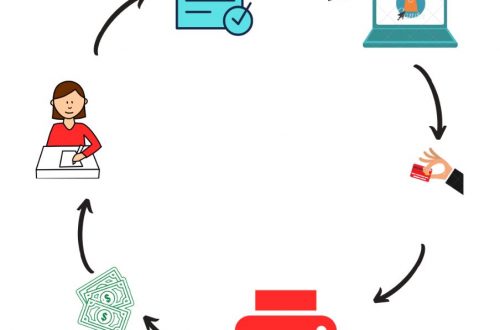How to become a virtual assistant with no experience
Do you want to learn how to become a virtual assistant with no experience? read on lets see a case study on one.

Virtual assistants offer administrative services to small businesses online, they take on tasks that small businesses are willing to outsource so that business owners can focus on their core business
This week, Nelda Schulte a colleague shares with us a case study on how to become a virtual assistant with no experience.
This means you have never done one before, this is what thehomebusinessonwer blog is all about, showing you how to start a home business where you have never done one before.
Case study of Amanda Lauren VA agency- Fictitious representation
Although Amanda loved working the digital industry as an administrative assistant, she never liked working 9 to 5 and wanted the freedom of choosing both her work and clients.
She deliberated over starting up her own home-based Virtual Assistant (VA) business but the thought of drumming up clients, losing her health care, paying her own taxes, and the constant isolation was a little scary.
When she was sent home to work during COVID, she realized the timing, and the experience of working from home was perfect to take the plunge.
Steps to take when starting a Virtual Assistant business
1. Setting up your business
Amanda discussed her business idea with her accountant and decided to set her business up as a sole proprietor. She registered her business under her first and middle name – Amanda Lauren and registered a website domain under the same name – AmandaLauren.com.
To register a domain name and buy hosting for your online VA agency I suggest you go with Ipage.com
Ipage offers a very good package for someone starting a small business, thier benefits include the following
- Free domain name
- Free SSL
- Hosting costs 1.99 per month starting price
- Unlimited domain emails
You can purchase hosting from Ipage for just 36 dollars per year
To purchase an Ipage hosting and domain now, click below
2. What services will you offer?
Amanda took stock of her skill set; administrative work, schedule management, booking travel arrangements and data entry.
Amanda also knew she had excellent organizational skills and was good at keeping projects on task and time.
Amanda is a voracious reader and enjoys writing. Through her own initiative, she wrote in-house blogs for her previous employer’s intranet newsletter which were very well received.
During her COVID time at home, she registered for an online freelance writing course with the goal of adding copywriting services to her portfolio.
With her skills listed she was able to identify what she will be offering as her service package.
To be able to do what Amanda did, you can take advantage of thhomebusiness planner that I created.
Thehomebusiness planner was created to help you to brainstorms and create your simple business plan within 2 hours.

The idea of matching your passions with a skill set to come up with business ideas was well explored.
Thehomebusiness startup checklist takes into consideration the different steps Amanda took to be able to arrive at her business plan.
3. Short, medium and long-range goals
Her short-term goals were to secure four to five clients for administrative type work while gradually taking on harder tasks and increased responsibilities so that she could work her way into project management VA work within 6 months.
Within a year she wanted to be taking project management and copywriting assignments and was also toying with the possibility of subcontracting the admin tasks to some of her junior colleagues
4. Setting Rates
Since she had five years of experience in the digital arena, she decided to set her rate at $35/hour for admin tasks and to eventually raise her rates to $65-$75/hour for project management and copywriting work.
Want to know how Amanda was able to set up her virtual assistant with no experience at running a virtual assistant business before? keep reading.
5. Advertising
Amanda wanted to start working immediately, she thought the quickest way to do that was by updating her LinkedIn Profile and adding portfolio links.
She knew her website would take a couple of months to complete and getting some freelance work under her belt would give her time to collect a few testimonials during her first months of self-employment.
Amanda then made a list of 5 contacts/companies she liked, that had people she wanted to work with.
She started with her warm list and then targeted a cold list (from her contacts, the internet, and LinkedIn research) and sent out 5 emails every week for a year.
In her emails, she included links to three relevant portfolio samples. She also created posts on her Facebook page letting people know what type of work she was seeking and that she was accepting clients in her niche, the digital industry.
She made a point of frequenting freelancing websites and connecting with other VA’s through LinkedIn and Facebook.
To practice writing, and to build credibility, she posted short SEO blogs on LinkedIn once a week. To increase her knowledge of SEO she took free courses on Udemy and Hubspot.
A year in retrospect
A year later, Amanda had more work than she could handle, and was on course with her income and the type of work she liked to do and reflected on lessons learned.
Lesson 1: Think like a business owner, not an employee
Initially, Amanda took every client who offered her work, including some who treated her like a junior employee at their beck and call evenings and weekends and demanded last-minute deadlines.
Amanda quickly realized that if she wanted to learn how to become a virtual assistant with no experience, she had to set standards for how she wanted to be treated when she would work, and what type of clients she would work with.
She realized she was still thinking like an employee and expecting her clients to call the shots.
As a business owner, it was up to her to take control of her work situation, and once she did, she fired her difficult clients, and never looked back.
Lesson 2: Charge for every project, every time
Amanda had potential clients who asked her to create sample projects as part of her “interview” process.
Initially, she agreed thinking the hours of work she put into the sample projects would pay off in the end. The opposite happened.
Amanda spent hours doing free work for clients that didn’t materialize when she could have been doing paid work.
Now if potential clients ask for a test project, she tells them her hourly rate and has them sign a contract and provides them with a timeline for completion, or directs them to her portfolio on her website or LinkedIn to view similar projects.
Lesson 3: Put contracts in writing
During the first few months, especially with new clients, Amanda experienced a lot of miscommunication over deadlines, project descriptions, and agreed to hours.
Now, after the initial phone call or email for new work, Amanda always follows up with a contract that specifies the project description, scope, hours, and fees. She has the client sign and dates the contract first before she begins work.
Lesson 4: The best neighbors have fences – set limits
After the third month of missed weekend plans, Amanda finally put her foot down and set a work policy that specified her hours of work, method of communication, turnaround time, and rush fees (for last-minute assignments she chose to take).
It took all of her courage to say stick to her guns, and follow her policy, but it paid off in the long run. She was happier with her work schedule and had clients who treated her time and expertise with respect.
Lesson 5:Keep Marketing
Amanda thought her clients would stay with her forever but soon understood that a small percentage of clients drop out for any given reason at any given time.
To keep business flowing in, she had to continue following her marketing strategy and to remember to ask her current clients if they needed any additional services.
Lesson 6: Learn from others
Amanda found a Facebook group of experienced VA’s she could ask questions about client issues, fees, and training programs, etc. in confidence.
The group not only proved to be great emotional support but ended up resulting in referral work for her and referrals for her group members.
For example you can joing thehomebusinessowners group on Facebook where we support to anyone doing business online. or wanting to start an online business
FAQ’s
Are there courses I can take to become a virtual assistant?
Yes, there are lots! You can start by checking out these four:
- Udemy
- 30 Days or Less Virtual Assistant
- Cava Training for VAs
- Become a Pinterest VA
What can I charge?
Fees vary considerably and depend on the complexity and scope of the project, your expertise and experience.
Start by estimating how much money you need to make per month to cover all your bills and feel comfortable.
Then go back and break it into weekly, daily, and hourly rates. Ask yourself how many hours you want/can work per day, week, month and that should give you your hourly rate.
Copywriters and project managers frequently charge per project (by estimating the duration of time it will take). Copywriters also charge per word.
If you’re just getting started you can charge .10 – .12 cents per word, or a flat rate of $50 per 800-word blog post (or whatever you believe is a reasonable rate for your time and talents). Once you add SEO, graphics, etc. you can charge more.
Virtual Assistant Facebook Groups
- Virtual Assistant Tribe Job Board
- Virtual Assistant Connections
- VA for Hire
- Virtual Assistant Blogging WordPress & Marketing
- Virtual Assistant Business Community
- Virtual Assistant Studio
- Virtual Assistant Jobs Pay it Forward
- Virtual Assistant Clinic
- Your Virtual Assistant
- Social Media & Marketing Jobs
- Virtual Assistant Tribe
- The VA Virtual Cafe
- Your Special Virtual Assistant
- Your Virtual Assistant BFF
- VA Directory
Becoming a Virtual assistant with no experience on how to run a business can be quite challenging, but with the appropriate steps as stated in this case study, you will be able to achieve your dream of starting your first VA business.
This case study was written by Nelda Schulte
Nelda Schulte is a freelance writer who specializes in real estate, technology, and STEAM. She can be reached at





